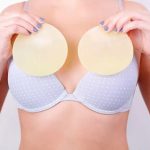What is breast reduction surgery?
Breast reduction surgery, also known as reduction mammaplasty, removes fat, breast tissue and skin from the breasts. For those with large breasts, breast reduction surgery can ease discomfort and improve appearance.
Breast reduction surgery might also help improve self-image and the ability to take part in physical activities.
If you’re thinking of breast reduction surgery, talk to a board-certified plastic surgeon. It’s important to understand what’s involved with breast reduction surgery, including possible risks and complications. It’s also important to know what the surgery can and can’t do.
 How much is breast reduction in Iran?
How much is breast reduction in Iran?
The price for a typical breast reduction surgery falls in the range of $2500 to $4000, including related expenses, such as anesthesia, medications, tests, clinic fee, etc. However, prices vary depending on the clinic and the surgeon. To get an updated quote, please give us a call.
Why it’s done
Breast reduction surgery is meant for people who have large breasts that cause the following:
- Chronic back, neck and shoulder pain
- Shoulder grooves from bra straps
- Chronic rash or skin irritation under the breasts
- Nerve pain
- Not being able to take part in some activities
- Poor self-image due to large breasts
- Trouble fitting into bras and clothing
Breast reduction surgery generally isn’t recommended for people who:
- Smoke
- Are very obese
- Don’t want scars on the breasts
You can have breast reduction surgery at any age — sometimes even as a teenager. But breasts that aren’t yet fully grown might need a second surgery later in life.
Reasons to postpone breast reduction surgery include:
- Planning to have children. Breastfeeding might be challenging after breast reduction surgery. However, certain surgical techniques can help keep the ability to breastfeed.
- Planning to lose weight. Losing weight can often result in changes to breast size.
 REASONS TO CHOOSE IRAN AS YOUR BREAST REDUCTION DESTINATION
REASONS TO CHOOSE IRAN AS YOUR BREAST REDUCTION DESTINATION
Whether to travel to another country for your breast surgery may be a tough decision to make. However, when it comes to undergoing the surgery with the same level of quality but affordable price, it would be reasonable if you travel to a country with an excellent reputation like Iran.
Today, Iran’s advances in medical services together with the Iranian surgeons’ expertise offers reliable solutions to many people suffering from body deformities. The country stands out among the top 10 countries performing plastic surgeries with the highest rate of nose surgery in the world. So, the country’s reaching front line of medical tourism in the world especially in the field of plastic surgeries.
Plastic surgeries including breast reduction are done with a high percentage of success and safety. This is because the country embraces a powerful society of board-certified and proficient plastic surgeons who not only have gained up-to-date knowledge of their field of specialization but also are equipped with many years of experience and proven records of successful surgeries.
As mentioned earlier, a strong reason making people flock to Iran lies behind the fact that everything in Iran is cheaper than anywhere in the world, from accommodation and travel services to healthcare services.
Last but not least, this country has caught the eyes of many people for the exotic tourism experience it offers, being ranked among the 52 must-go places in 2019 by The New York Times. The reasons include, but are not limited to, the great history, rich culture, unique architecture, superb cuisine, and most-importantly warm-hearted people.
Breast Reduction Surgery Consultation
Before the surgery, you’ll meet with your surgeon to talk about your medical history, including whether you’ve had a lump removed from your breast or have any other medical conditions that affect your breasts. Your surgeon will also ask about your family’s medical history.
Be completely open with the surgeon about your medical history and why you want a breast reduction. Be prepared to discuss any emotional issues you’ve dealt with regarding your breasts, how your breasts have physically felt to you, and any physical conditions you’ve had.
The surgeon may take photos of your breasts, measure them, and talk with you about how much breast tissue will need to be removed to achieve your goal. You will also learn about preparing for the surgery and planning for your recovery. You may get a mammogram and breast exam before the surgery.
During your consultation, your surgeon will ask about your habits, including whether you smoke and what medications you take. You may have to quit smoking for a period before and after surgery to ensure proper healing. You also may have to stop taking certain medications, including aspirin or other anti-inflammatory drugs such as Motrin or Aleve. Your surgeon will give you instructions about what you need to do.
Breast Reduction Surgery Procedure
Depending on your case, you might have breast reduction surgery in an outpatient facility, or you may have to stay at least one night in the hospital. In either case, you’ll get general anesthesia, which means you will be put to “sleep” during the procedure.
Breast reduction surgery will take about 2 to 5 hours, sometimes longer.
Your surgeon could use one of a few surgery methods, depending on the shape and size of your breasts, how much tissue they need to remove, and how you want to look after surgery:
- Liposuction. The surgeon will make small cuts in your skin and insert a thin tube connected to a vacuum that suctions fat and fluids from your breast. This option is best for small reductions and for people whose skin will “snap back” into place.
- Vertical or “lollipop.”This method is for moderate breast reductions and visible sagging. The surgeon will make cuts around your areola and down to the crease beneath your breast, remove extra tissue and fat, reshape the breast, and lift it.
- Inverted-T or “anchor.”The surgeon will make cuts around the edge of the areola, from the areola to the breast crease, and along the crease underneath the breast. This type of surgery is best for large reductions and for people who have a lot of sagging or unevenness.
Your surgeon may use drainage tubes and then stitch up your breasts and wrap them in a special gauze. You may also need to wear a surgical bra.
- Inverted-T or “anchor.”The surgeon will make cuts around the edge of the areola, from the areola to the breast crease, and along the crease underneath the breast. This type of surgery is best for large reductions and for people who have a lot of sagging or unevenness.
Your surgeon may use drainage tubes and then stitch up your breasts and wrap them in a special gauze. You may also need to wear a surgical bra.
Breast Reduction Surgery Recovery
Expect to take at least a week off from work or school afterward. Some people need a couple of weeks, but each situation varies. Your surgeon will instruct you on follow-up appointments for removing bandages and stitches.
While you recover, you’ll need to stop physical activity for at least a month after surgery.
After the surgery, you should expect to feel tired and to have breast pain. Your surgeon will give you an oral painkiller to ease you through the first few days. You should also avoid heavy lifting.
Some people have an emotional reaction, such as feeling depressed, after the surgery. That can be normal, but make sure you tell your doctor about all your concerns.
Breast Reduction Surgery Risks and Complications
Scars are a normal side effect of breast reduction surgery. These scars will fade over time but will never go away completely. They might be worse if you lift heavy objects too soon after surgery.
Other possible problems include:
- Infection
- Loss of feeling in your breasts or nipples, which could be brief or long-term
- Side effects of the medication to help you sleep during surgery (anesthesia)
- Bleeding
- Blood clots
- Swelling and bruising
- Damage to nerves, blood vessels, and other parts of your body
- The need for more surgery Rarely, certain complications, such as inadequate healing of the nipple area, may require a skin graft.
























